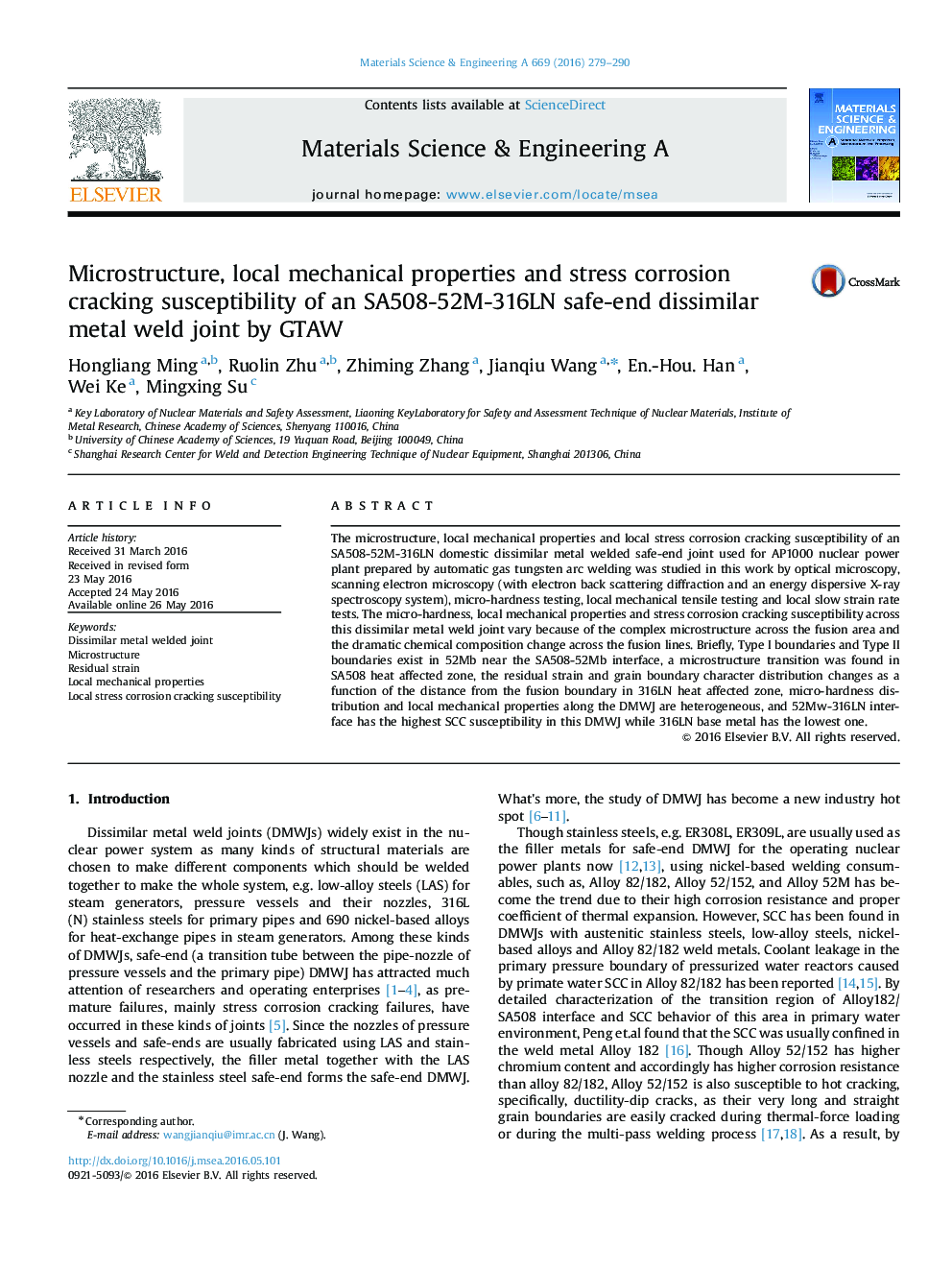| Article ID | Journal | Published Year | Pages | File Type |
|---|---|---|---|---|
| 1573372 | Materials Science and Engineering: A | 2016 | 12 Pages |
Abstract
The microstructure, local mechanical properties and local stress corrosion cracking susceptibility of an SA508-52M-316LN domestic dissimilar metal welded safe-end joint used for AP1000 nuclear power plant prepared by automatic gas tungsten arc welding was studied in this work by optical microscopy, scanning electron microscopy (with electron back scattering diffraction and an energy dispersive X-ray spectroscopy system), micro-hardness testing, local mechanical tensile testing and local slow strain rate tests. The micro-hardness, local mechanical properties and stress corrosion cracking susceptibility across this dissimilar metal weld joint vary because of the complex microstructure across the fusion area and the dramatic chemical composition change across the fusion lines. Briefly, Type I boundaries and Type II boundaries exist in 52Mb near the SA508-52Mb interface, a microstructure transition was found in SA508 heat affected zone, the residual strain and grain boundary character distribution changes as a function of the distance from the fusion boundary in 316LN heat affected zone, micro-hardness distribution and local mechanical properties along the DMWJ are heterogeneous, and 52Mw-316LN interface has the highest SCC susceptibility in this DMWJ while 316LN base metal has the lowest one.
Related Topics
Physical Sciences and Engineering
Materials Science
Materials Science (General)
Authors
Hongliang Ming, Ruolin Zhu, Zhiming Zhang, Jianqiu Wang, En.-Hou. Han, Wei Ke, Mingxing Su,
